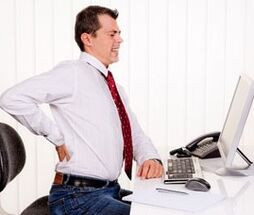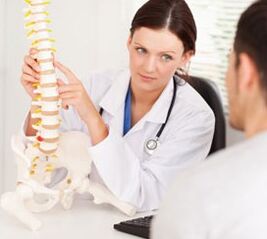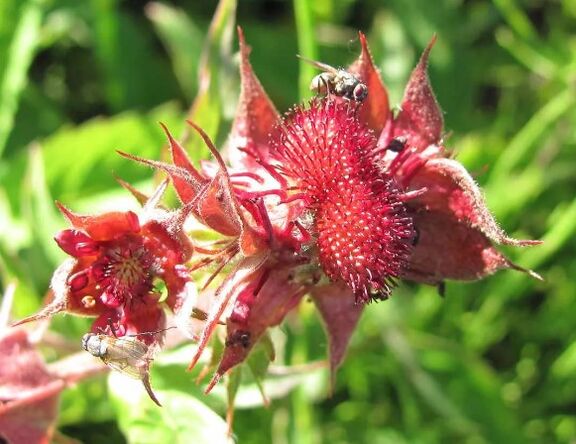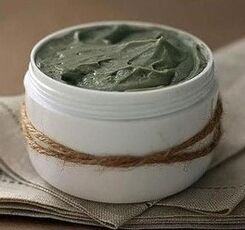Osteochondrosis-The spine score, a characteristic feature of which is the degenerative-degenerative lesion of the intervertebral discs, and then the vertebral tissue itself.
The main sign of osteochondrosis is the pain in the neck or spine. Among other symptoms, muscle atrophy, impaired sensitivity, disorders in the work of the internal organs are distinguished. Depending on the localization of the pathological process, lumbar osteochondrosis is distinguished. If this disease and its treatment do not pay the necessary attention, the process of damage to the spine will be irreversible.

In English literature, the term "osteochondrosis" means such a group of diseases of the muscular system, such as osteochondropathy.
The main factor, or the cause leading to the development of osteochondrosis, is an uneven distribution of load on the back, which occurs when you wear on one side or shoulder of weights (for example, bags, back bags), a long stay in the wrong position, night rest in an uneven mattress or pillow. Extra factors can also be a sedentary lifestyle, overweight, damage and flat feet.
All of the above situations over the years lead to frequent pain in the cervical, chest or sacral back.
According to statistics, osteochondrosis occurs from 40 to 90% of the population in the world, mainly from the age of 30-35. In adverse conditions, this disease develops in people of adolescence, who most often contribute to wearing a severe unpleasant backpack, especially on a shoulder, shoes and unpleasant injuries.
The development of osteochondrosis
The development of osteochondrosis occurs in 4 selected stages (scale):
Phase 1 osteochondrosis.It is characterized by the onset of the pathological process in the polyposom nucleus of the intervertebral disc - its dehydration (dehydration) occurs, and later the height of the disk occurs. At the same time, the cracks begin to appear in the fibrous ring. At this stage, the patient usually does not feel any difference. The discomfort can be manifested with an unusual position for a person, or active exercise.
Stages of osteochondrosis 2.With a decrease in discs, the distance between neighboring vertebrae also decreases, and vertebrates and ligaments begin to decrease slightly. This process leads to the ultravity of the two neighboring vertebrae, which can lead to their sliding and/or displacement. Spondylolistz is formed. Due to the displaced vertebrae, the patient with a certain load feels real discomfort, and sometimes pain in the field of pathology.
Stages of osteochondrosis 3.It is characterized by the formation of prolapesses and discs extensions, sometimes subluxation and arthritis occur in the intervertebral joints. The patient can feel rigid in some movements, feel tingling in the limbs, sometimes numbness occurs. On the 3rd degree of osteochondrosis, pain in the posterior area, neck and coccyx, depending on the localization of the disease, is already present.

Osteochondrosis 4 stages.The body is trying to correct the excessive mobility of the vertebrae as well as normalize the function of the spine. At the place of bonding the vertebrae to pathology, bone neoplasms grow on each of them - osteophytes, which, when formed in an unnecessary place, can cause microtrauma in a nerve spine, and sometimes a neighboring vertebra. In discs and joints, the processes of fibrous ankylosis can begin. The engine segment is overloaded and becomes like the walls up. At the same time, the main signs of osteochondrosis are minimized, and sometimes in general, they are practically not visible.
Symptoms of osteochondrosis
The main symptoms of osteochondrosis are discomfort and pain in the back or neck. The strength of the pain and other related signs of this disease depend on the rate of osteochondrosis.
Of course, due to the pathology of the intervertebral discs, their hernia, the growths in the beads (osteophytes), there are a large number of disorders, such as circulatory disorders, pinching nerves, irritation and violations in the normal functioning of the spinal cord, edema and even fibrosis surrounding vertebrae. All of these disorders can cause a wide clinical appearance of the disease, and express themselves from a abundant amount of various symptoms, therefore, without a complete diagnosis of osteochondrosis, it is very difficult to make the correct diagnosis and prescribe an adequate treatment.
However, we will consider the main symptoms of osteochondrosis:
Moreover, depending on the area of the spine in which the osteochondrosis struck, the following symptoms are distinguished:
Osteochondrosis of the cervical spine.Pain in the hands and shoulders prevail, headaches, dizziness, "flies" or stains in front of the eyes, noise on the head. These signs can also indicate the presence of vertebral artery syndrome, which can also complicate the work of the heart muscle and myocardial blood vessels if other diseases are present in them.
Osteochondrosis of the spine of the chest.Chest pain, heart areas and discomfort in respiration prevail.
Osteochondrosis of the lumbosacral spine.Pain in the lower back prevails, giving the legs or organs of the pelvis. Violation of sexual function.

Complications of osteochondrosis
If osteochondrosis is not treated and put in a habit, it can lead to the development of the following diseases and pathologies:
Causes of osteochondrosis
The classification of osteochondrosis
The classification of osteochondrosis is very diverse because the disease itself is not fully studied.
We emphasize the most popular ways to share this disease.
Osteochondrosis is distinguished. . .
By localization:
Diagnosis of osteochondrosis
The diagnosis of osteochondrosis includes the following methods of examination:
Moreover they can name:
The treatment of osteochondrosis
Treatment of osteochondrosis implies the use of a set of measures to be performed for a long period of time (from 1-3 months + about 1 year to rehabilitation), to which many patients respond very vaguely. Therefore, it should be noted that, indirectly, the recommendations of the attending physician, the forecast for the patient's recovery is minimal.

An additional problem in the treatment of osteochondrosis often becomes self -medication. The fact is that, as already written in the article, with this disease, clinical photography is quite unclear and extensive. The patient without diagnosis begins to choose medication against what hurts, and, by eliminating pain, then deals with his daily life, while the disease continues to progress.
The treatment of osteochondrosis is performed by two main methods: conservative and surgical treatment. Moreover, there are general recommendations in the treatment of osteochondrosis, such as diet, rehabilitation.
Conservative treatment of osteochondrosis
Conservative treatment of osteochondrosis is aimed at stopping pain syndrome, normalization of the spine and its components, as well as preventing further dystrophic changes in a person's "axis".
Conservative osteochondrosis treatment includes:
Medication therapy.It is used to relieve the pain and inflammation of the spinal tissue components as well as normalization of metabolic processes.
To stop the pain and inflammation processes, different therapeutic blockages are also used. In addition, they contribute to a decrease in muscle syndrome-tone. Among the therapeutic blockade there are: Blockage of causing points, as well as blockages inside the bone, preverstebral and epidural.
Physiotherapy.It is used to relieve pain, increasing the effectiveness of medication therapy and in the rehabilitation period. Treatment is performed using ultrasound, laser, magnetic fields, low frequency currents, etc.
Medical physical education (exercise therapy), kinetherapy.Specially selected, dose exercises aimed at correcting muscle lanes, strengthening it, correcting behavior, normalizing muscle tissue and their flexibility, decompression of nerve roots, preventing possible complications of the disease. All of the above is achieved due to the normalization of metabolism and the food of the intervertebral discs, blood circulation, restoration of the distance of the discs and vertebrae, the distribution of load throughout the muscle system.
MassageIt is used to improve blood circulation, relieving stiffness and muscle tissue tissue, to improve the overall state of health.
Hydromassage.It contributes to the normalization of blood circulation, metabolism, an increase in muscle tone tone and normalization of the nervous system. It implies body massage with the help of a water stream with a certain target pressure on it. True, hydromassage has recently prevailed using body -supplied air bubbles in the bathroom or specially equipped pools.
Manual therapy.It is used according to a program individually selected, carefully affecting the bone muscular system. It helps to improve blood circulation and lymphatic cycle, metabolism, muscle system mobility, strengthening the immune system and prevent possible complications.
Extension of the spine.It is used using special equipment, to increase the intervertebral space, the correction of the spine structure, which usually leads to minimizing or relieving pain completely.
The integrated use of the above treatment for osteochondrosis has a good effect.
Diet for osteochondrosis
With osteochondrosis, it is necessary to eat 6 times a day, in small portions, drinking at least 1. 5 liters of water a day.
What can be eaten with osteochondrosis:Dairy products, low meat varieties (chicken, beef), jelly, flooded fish, jelied meat, fresh vegetables (tomatoes, cucumbers, onions, carrots, pepper, cabbage, celery, fruits, avocados, nuts, flower seeds, spinach,
What should be minimized in food for osteochondrosis:Grapes, legumes (peas, beans, etc. ), flour products, spicy spices, sugar, salty foods, meat soup and smoked meat.
It is better to cook food because with this method of preparation, the products carry the maximum amount of vitamins and trail elements.

Try to season salads with olive oil.
Surgical treatment of osteochondrosis
Surgical treatment of osteochondrosis is used if the conservative method is ineffective. Prescribed by the attending physician. It can also be used for heavy spinal lesions and its components.
Treatment of osteochondrosis with popular remedies
Folk remedies against osteochondrosis
DoughPrepare a little dough from the rye flour, 300 grams and let it extend to room temperature for two days. Drink a glass of milk and rub the place where the back hurts with a turpentine. Once you wrap the dough in the gauze and glue it to the sore spot, tie a cellophane to the top, and then a scarf or towel. After some time, you may feel burning and tingling in that area, but tolerate as much as you can. Do the procedure every other day. Use each group of dough no more than 3 times.
SaberMake a solution from saberfish. The place where your back hurts, with the solution prepared with the prepared solution and tie it to the handkerchief. Moreover, you can get solution from saberfish a few drops before bedtime.
Ointment from osteochondrosis.Add 1 tbsp to the container. One tablespoon of flour, 1 egg, 100 g of butter and 1 tablespoon. A spoonful of vinegar, mix everything thoroughly and place in a dark place for 2 days, to insist. After the foam deleting resulting from the mixture. Once again, mix the mixture well and rub the resulting oil in a sore place.
RadishMix 300 ml of radish juice, 200 g of honey and 100 ml of vodka. Rub the back with the resulting mixture. This popular medicine also helps with radiculitis and rheumatism.



































